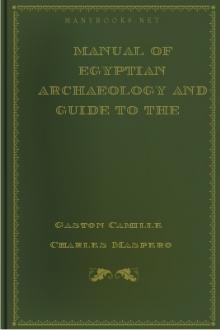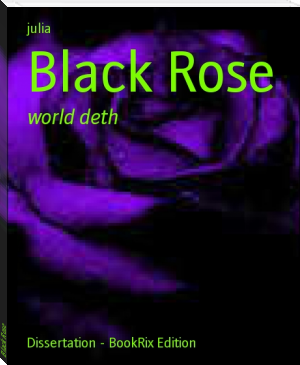Ancient America, in Notes on American Archaeology by John D. Baldwin (best thriller books to read .TXT) 📕

"It is in the form of a serpent, upward of 1000 feet in length, extended i
Read free book «Ancient America, in Notes on American Archaeology by John D. Baldwin (best thriller books to read .TXT) 📕» - read online or download for free at americanlibrarybooks.com
- Author: John D. Baldwin
- Performer: -
Read book online «Ancient America, in Notes on American Archaeology by John D. Baldwin (best thriller books to read .TXT) 📕». Author - John D. Baldwin
“Casa No. 2” consists of a steep and lofty truncated pyramid, which stands on a terraced foundation, and has its level summit crowned with a building 50 feet long by 31 wide, which has three doorways at the south, and within a corridor and three rooms. This edifice, sometimes called “La Cruz,” has, above the height required for the rooms, what is described as “two stories of interlaced stucco-work, resembling a high, fanciful lattice.” Here, too, inscribed tablets appear on the walls; but the inscriptions, which are abundant at Palenque, are by no means confined to tablets. As to the ornamentation, the walls, piers, and cornices are covered with it. Every where the masterly workmanship and artistic skill of the old constructors compel admiration; Mr. Stephens going so far as to say of sculptured human figures found in fragments, “In justness of proportion and symmetry they must have approached the Greek models.”
“Casa No. 2” of Mr. Stephens is usually called “La Cruz” because the most prominent object within the building is a great bas-relief on which are sculptured a cross and several human figures. This building stands on the high pyramid, and is approached by a flight of steps. Dupaix says, “It is impossible to describe adequately the interior decorations of this sumptuous temple.” The cross is supposed to have been the central object of interest. It was wonderfully sculptured and decorated; human figures stand near it, and some grave ceremony seems to be represented. The infant held toward the cross by one of the figures suggests a christening ceremony. The cross is one of the most common emblems present in all the ruins. This led the Catholic missionaries to assume that knowledge of Christianity had been brought to that part of America long before their arrival; and they adopted the belief that the Gospel was preached there by St. Thomas. This furnished excellent material for the hagiologists of that age; but, like every thing else peculiar to these monkish romancers, it betrayed great lack of knowledge.
The cross, even the so-called Latin cross, is not exclusively a Christian emblem. It was used in the Oriental world many centuries (perhaps millenniums) before the Christian era. It was a religious emblem of the Phœnicians, associated with Astarte, who is usually figured bearing what is called a Latin cross. She is seen so figured on Phœnician coin. The cross is found in the ruins of Nineveh. Mr. Layard, describing one of the finest specimens of Assyrian sculpture (the figure of “an early Nimrod king” he calls it), says: “Round his neck are hung the four sacred signs; the crescent, the star or sun, the trident, and the cross.” These “signs,” the cross included, appear suspended from the necks or collars of Oriental prisoners figured on Egyptian monuments known to be fifteen hundred years older than the Christian era. The cross was a common emblem in ancient Egypt, and the Latin form of it was used in the religious mysteries of that country, in connection with a monogram of the moon. It was to degrade this religious emblem of the Phœnicians that Alexander ordered the execution of two thousand principal citizens of Tyre by crucifixion.
The cross, as an emblem, is very common among the antiquities of Western Europe, where archæological investigation has sometimes been embarrassed and confused by the assumption that any old monument bearing the figure of a cross can not be as old as Christianity.
What more will be found at Palenque, when the whole field of its ruins has been explored, can not now be reported. The chief difficulty by which explorers are embarrassed is manifest in this statement of Mr. Stephens: “Without a guide, we might have gone within a hundred feet of the buildings without discovering one of them.” More has been discovered there than I have mentioned, my purpose being to give an accurate view of the style, finish, decoration, and general character of the architecture and artistic work found in the ruins rather than a complete account of every thing connected with them. The ruins of Palenque are deemed important by archæologists partly on account of the great abundance of inscriptions found there, which, it is believed, will at length be deciphered, the written characters being similar to those of the Mayas, which are now understood.
COPAN AND QUIRIGUA.The ruins known as Copan are situated in the extreme western part of Honduras, where they are densely covered by the forest. As already stated, they were first discovered by Europeans about forty years after the war of the conquest swept through that part of the country, and were at that time wholly mysterious to the natives. The monuments seem older than those at Palenque, but we have only scant descriptions of them. They are situated in a wild and solitary part of the country, where the natives “see as little of strangers as the Arabs about Mount Sinai, and are more suspicious.” For this reason they have not been very carefully explored. It is known that these ruins extend two or three miles along the left bank of the River Copan. Not much has been done to discover how far they extend from the river into the forest.
Mr. Stephens describes as follows his first view of them: “We came to the right bank of the river, and saw directly opposite a stone wall from 60 to 90 feet high, with furze growing out of the top, running north and south along the river 624 feet, in some places fallen, in others entire.” This great wall supported the rear side of the elevated foundation of a great edifice. It was made of cut stone well laid in mortar or cement, the blocks of stone being 6 feet long. Figure 29 shows the wall somewhat imperfectly. He saw next a square stone column standing by itself, 14 feet high and 3 feet on each side. From top to bottom it was richly ornamented with sculptured designs on two opposite sides, the other sides being covered with inscriptions finely carved on the stone. On the front face, surrounded by the sculptured ornaments, was the figure of a man. Fourteen other obelisks of the same kind were seen, some of them being higher than this. Some of them had fallen. These sculptured and inscribed pillars constitute the chief peculiarity of Copan. Mr. Squier says of them: “The ruins of Copan, and the corresponding monuments which I examined in the valley of the Chamelican, are distinguished by singular and elaborately carved monoliths, which seem to have been replaced at Palenque by equally elaborate basso relievos, belonging, it would seem, to a later and more advanced period of art.”
The great building first noticed stands, or stood, on a pyramidal foundation, which is supported along the river by that high back wall. The structure extends 624 feet on the river line. Mr. Stephens described it as an “oblong inclosure,” and states that it has a wide terrace nearly 100 feet above the river, on which great trees are growing, some of them more than 20 feet in circumference. Here, as at Palenque, the ornamentation was “rich and abundant.” The ruins, greatly worn by decay, still show that “architecture, sculpture, painting, and all the arts that embellish life had flourished in this overgrown forest.” Some beautifully executed sculptures were found buried in the earth, and there can be no doubt that extensive excavation, if it were possible in that almost invincible forest, would lead to important and valuable discoveries. Besides the great building and the monoliths, several pyramidal structures are mentioned by Mr. Stephens, who points out that extensive exploration is impossible unless one shall first clear away the forest and burn up the trees.
Palacios, who described this ruined city nearly three hundred years ago, saw much more than Mr. Stephens. He described “the ruins of superb edifices, built of hewn stone, which manifestly belonged to a large city.” He mentions, in connection with the great wall, an enormous eagle carved in stone, which bore a square shield on its breast covered with undecipherable characters. He mentions, also, a “stone giant,” and a “stone cross” with one arm broken. He saw a “plaza,” circular in form, surrounded by ranges of steps or seats, which reminded him of the Coliseum at Rome, “as many as eighty ranges still remaining in some places.” This “plaza” was “paved with beautiful stones, all square and well worked.” Six of the great obelisks, which he described as “statues,” stood in this inclosure, and in its centre was a great stone basin.
A history of Guatemala, by a writer named Huarros, states that the “Circus of Copan,” as he calls the “plaza” described by Palacios, was still entire in the year 1700. He mentions gateways which led into the inclosure, and says it was surrounded on the outside by stone pyramids six yards high, near which were standing sculptured figures or obelisks. No doubt, remains of this remarkable “circus” would be found now, if the forest should be removed. What else could be found there by means of careful and thorough exploration may never be known, for the region is uninviting, the forest very difficult, and such an exploration would require much more than the means and efforts of one or two individuals.
Not very far away, in the neighboring State of Guatemala, on the right bank of the River Motagua, to which the Copan is a tributary, are the ruins called Quirigua. It is manifest that a great city once stood here. These ruins have a close resemblance to those at Copan, but they appear to be much older, for they have, to a great extent, become little more than heaps of rubbish. Over a large space of ground traces of what has gone to decay are visible. Doubtless important relics of the old city are now more abundant below the surface than above it. Mr. Stephens, describing what he saw there, confines his attention chiefly to a pyramidal structure with flights of steps, and monoliths larger and higher than those at Copan, but otherwise similar. He states, however, that while they have the same general style, the sculptures are in lower relief and hardly so rich in design. One of the obelisks here is twenty feet high, five feet six inches wide, and two feet eight inches thick. The chief figures carved on it are that of a man on the front, and that of a woman on the back. The sides are covered with inscriptions similar in appearance to those at Copan. Some of the other standing obelisks are higher than this. It seems reasonable to infer that the structures at Quirigua were more ancient than those at Copan.





Comments (0)